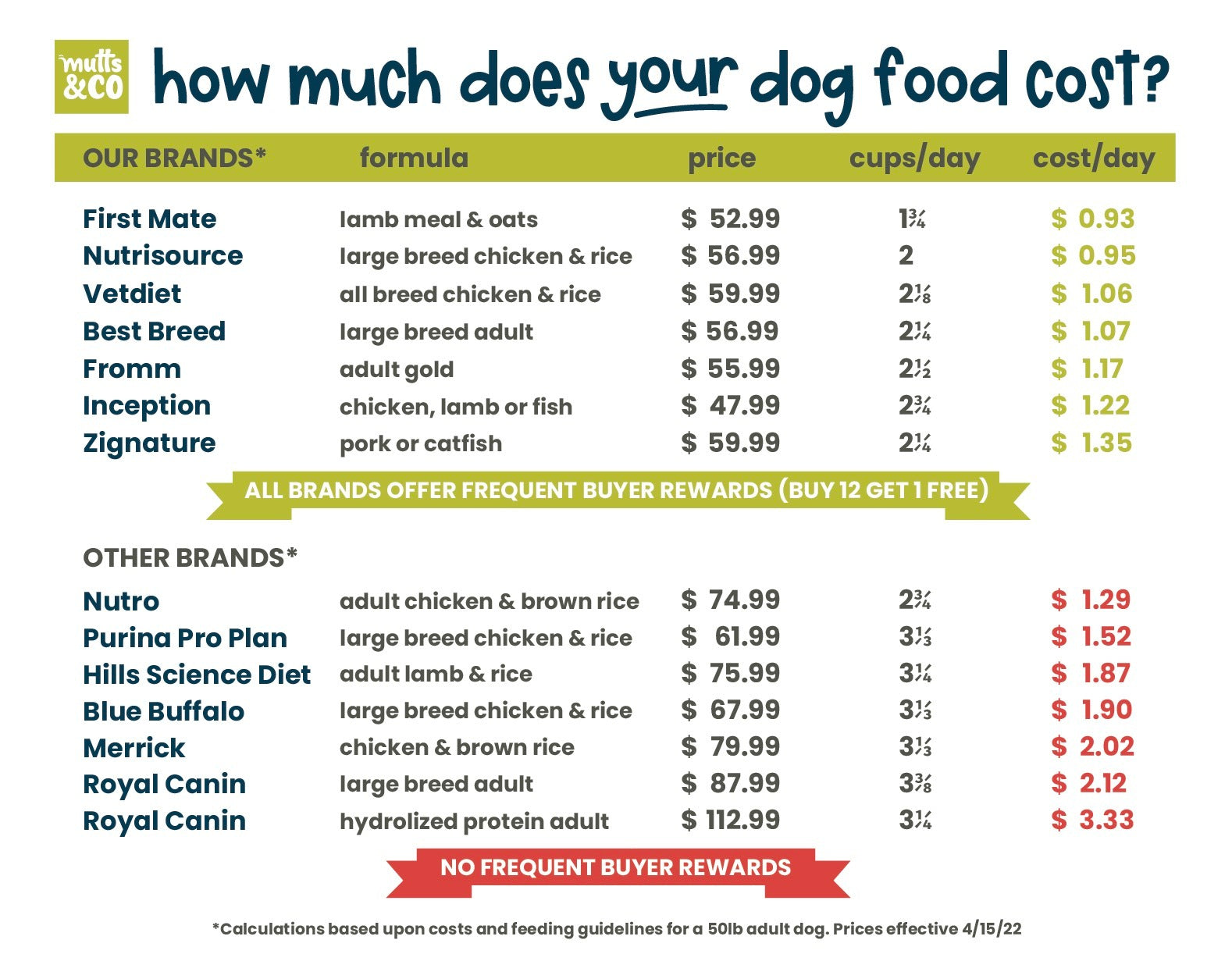Everyone is feeling the pinch of rising costs – including pet parents. Inflation, supply chain challenges, raw materials shortages, labor and transportation issues have all have factored into higher prices for pet products. And while some items are luxury goods for special occasions, every dog and cat have to eat, making pet food an essential – and expensive – element of pet ownership.
One may think saving on pet food means picking the cheapest bag. But that’s not necessarily the case. All pet food is not made equal. And selecting food based simply on the price tag may ultimately impact the overall health and wellness of your pet. Food is all about ingredients, so read the label. A good pet food is high in:
- Whole, natural ingredients like meat, fruits and vegetables
- Digestible, ancestral grains like barley, oatmeal, rice, millet, milo, chia or quinoa
- For pets which cannot tolerate grains, then pumpkin or sweet potato
- And avoiding corn, wheat, soy and by-products or rendered ingredients
Think of your own eating habits. Fast food may seem to cost less per meal for our family, but we know the nutritional value isn’t ideal for everyday consumption. Just like we wouldn’t feed our children fast food for every meal, we shouldn’t feed low quality diets to our four-legged family members. A healthy meal may cost a few cents more but ultimately leads to a better lifestyle for both pets and people.
Several factors weigh into your overall cost of pet food.
Feeding Guidelines – A better food can be used less per feeding due to the higher nutritional value and caloric density. As such, a 25 lb bag of higher quality food can last longer…and ultimately cost less per feeding…than a 25 lb bag of pet food produced of fillers and lower quality ingredients. Do the math! Determine the cost per meal:
- Price of Bag / # of lbs or cups = Cost per lb or cup
- Determine optimal daily feeding guideline from packaging based on your pet’s weight and activity level
- Multiply Cost per lb / cup x daily feeding amount = Cost per day
Bioavailability - The term bioavailability refers to the proportion or fraction of a nutrient, consumed in the diet, that is absorbed and utilized by the body. Foods with higher meat protein content, as well as pre- and pro-biotics for digestive support, will have a higher bioavailability. And a pet food consisting of more bioavailable ingredients can be fed less (and a bag last longer) while still providing optimal nutritional value for a robust body, strong bones, and shining coat.
Vet Bills – When factoring the cost of pet food, consider other expenses you may be able to avoid. Vet bills are a huge component to pet ownership. And while sometimes you find a dog or cat who luck out with great genetics, healthy food can contribute to better overall pet wellness and optimal weight management. And that can result in fewer vet visits, surgeries and other expensive medical procedures. A few dollars spent upfront on quality food can equate to ‘preventative care’ to avoid future bills and possibly allow them to lead a longer, healthier life.
We choose the food we eat because it’s good for us AND tastes good. Your pets deserve the same. High quality food, filled with natural ingredients, will be something your dog or cat wants to eat. Looking forward to meal time. Giving them more energy while keeping them satiated and feeling full rather than hungry all day. Providing a foundation for solid bone growth, dental care and optimal weight. And did we mention less poop? All while saving money over their long, healthy life.

